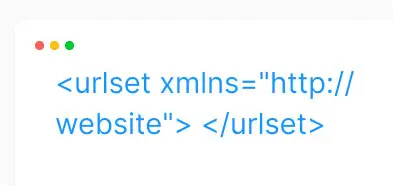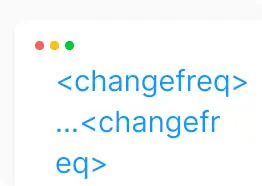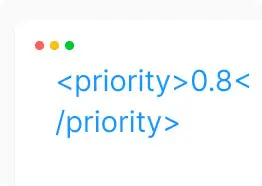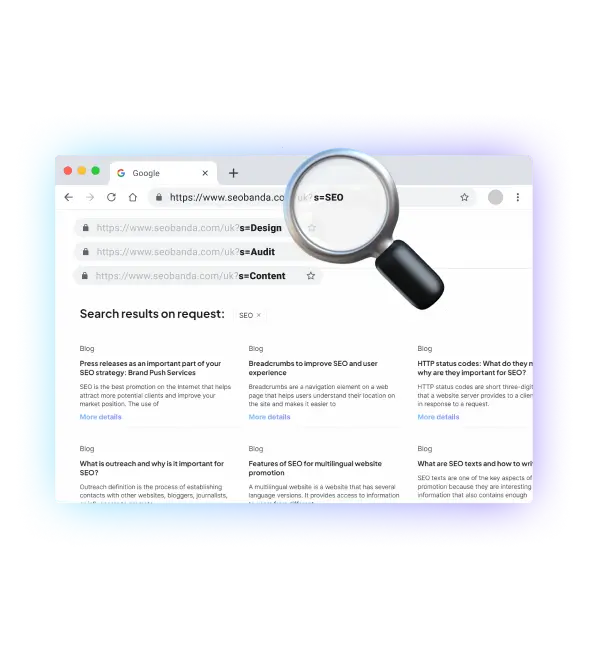Sitemap.xml: Basics and importance for improving SEO
Last time, we analyzed the importance of properly configuring the robots.txt file, and today we will talk about sitemap.xml. After all, this is another way to optimize your website to help search engines index your pages better. We want to tell you about the importance of this file for SEO promotion, as well as about the ways to create it and configure it correctly.



Definition of sitemap.xml
A sitemap.xml file is a file that contains a list of URLs of pages to make it easier for search engines to navigate your site and further index these pages. In simple terms, this file is like a map or guide for Google, which shows in a structured way which pages and in what sequence should be analyzed and indexed.


File elements for correct configuration
The sitemap.xml file consists of a set of XML tags that provide information about the URLs of a website. Here are the main components of the sitemap.xml file:
The first thing in the file is the XML declaration, which specifies the XML version and character encoding.

Next is the mandatory <urlset> tag, which is the root element of the file and contains one or more <url> tags. Each of which represents a separate URL on the website and contains a child <loc> tag that points to the actual URL of the web page.


Optional tags may also be included, such as <lastmod>, which indicates the date the URL was last modified in the format YYYY-MM-DD. Also, the <changefreq> tag, which indicates the frequency of URL changes. And the last tag is <priority>, which indicates the relative importance of the URL in comparison to other URLs on the site.



The correctness of the file itself depends on the correct use and configuration of these tags, which in turn affects the speed of crawling and indexing of pages by search engines.


Purpose of the file
The sitemap.xml file is an important tool for optimizing a website for search engines. Its main purpose is to help search engines crawl and index website pages efficiently.
Importance of sitemap.xml for SEO
- Improves website indexing, as the sitemap.xml file provides search engines with a structured list of URLs that ensures that all important pages of the site are thoroughly crawled.
- It helps search engines to determine the importance of each page using the <priority> tag, which indicates its value and relevance for crawling and indexing.
- Better communication of each URL’s metadata, such as page refresh rate, last modified date, and alternative language versions, which helps search engines better understand and categorize site content.
When do you need a sitemap?
A sitemap is useful for most websites, but there are certain cases where it is especially important:
- If you have a website with a lot of pages, a sitemap helps search engines find and index all of your content.
- For new websites that don’t have many external links yet, a sitemap.xml file can help search engines find and index your pages faster.
- If you have pages on your site that are difficult to find through navigation (for example, pages that are only accessible through search or a few clicks away), a sitemap can help search engines not miss them and crawl them.
- You can create separate sitemap.xml files for websites with a lot of multimedia content.
- Websites with frequent content updates need a sitemap.xml to help search engines find and index new pages quickly.
Although this file is not a mandatory parameter for a website, its creation and proper configuration can bring certain benefits when deploying an SEO strategy. You will also increase your competitiveness, because thanks to sitemap.xml, you can improve the visibility of your site in search engines and help attract more organic traffic.


Where and how to find the file

To locate and view the sitemap.xml file on a website, you can try the following steps:
Add “/sitemap.xml” to the website URL. For example, if the website is “https://www.example.com”, try changing it to “https://www.example.com/sitemap.xml”.
You can also check the site’s robots.txt file (for example, https://www.example.com/robots.txt), which may contain a link to the location of the sitemap.xml file.
If you still can’t find the sitemap.xml, contact the website owner or development team to see if they have created and hosted the file.

Increase visibility
for your business: SEO solution for growth!


How to create a sitemap.xml
- The first way to create a sitemap.xml file is manually. To do this, you need to create a new text file and carefully write down the syntax and general rules for the sitemap.
- You need to add all the URLs that should be indexed by the search engine. This method is only suitable for small websites with a small number of pages, as it takes a lot of time and effort.
- The second is to use sitemap generation tools. You can use online tools such as XML-Sitemaps.com to automatically create a sitemap.xml file. This method is very easy to implement, as it does not require any knowledge and attention.
- If you are using a content management system (CMS) like WordPress, it is better to use plugins like Yoast SEO or Google XML Sitemaps to automatically create and update the sitemap.xml file.


How to check the newly created sitemap
- You need to check the sitemap.xml file for syntax or formatting errors using specialized tools, such as the Sitemap Validator from XML-Sitemaps.com.
- Next, you should submit the URL of the sitemap.xml file via webmaster tools such as Google Search Console to search engines to encourage them to crawl and index your pages.
- You should keep track of your indexing statistics, i.e. which pages have been crawled by search engines and approved and which have not. This will help you determine the effectiveness of your sitemap file and identify any indexing issues.
- It is important to update your sitemap file regularly, especially when adding new pages or making significant changes to your website. Also, don’t forget to submit the updated file to search engines.

Increase visibility
for your business: SEO solution for growth!


Common mistakes when creating and customizing a file and how to avoid them
- Error: Including invalid or non-existent URLs that return a 404 error.
- Solution: Make sure that all URLs in the sitemap are valid, accessible, and lead directly to the relevant pages.
- Error: Failure to include important pages of the website in the sitemap, which makes them difficult for search engines to find.
- Solution: Make sure that the file contains links to all important pages of your site, including the home page, category pages, product pages, etc.
- Error: Creating a very large sitemap.xml file that exceeds the recommended limits.
- Solution: use an index sitemap to organize a large sitemap into smaller ones.
- Error: sitemap not being submitted to search engines
- Solution: submit a newly created or updated sitemap and add a link to the sitemap.xml to the robots.txt file.
By avoiding these common mistakes and following the recommended practices, you can ensure that your sitemap.xml file is properly configured and effectively helps search engines crawl and index your website.


Need help
Whether you’re just starting out or can’t find a sitemap.xml file in an existing website, our experts can help you create and/or configure the file so that search engines crawl your site quickly and easily and index every page. Contact our live consultants for advice and assistance.
You may also like it

Brand identity: The key to brand recognition and SEO success
Every product has its own unique feature that sets it apart from other brands. It could be a special font, a unique mascot, or an interesting logo with the right...

What is a dynamic URL and its impact on SEO
A dynamic URL (Uniform Resource Locator) is a web address that changes depending on the user's request or specific parameters. It differs from a static













